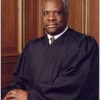Types of Cases Tried in Federal Court
Federal courts do not take just any cases, they only take specific cases, usually ones that involve the sate, violations of the constitution, or violations of special federal law cases.There are specialized cases but not many.
District courts deal with these Federal crimes which can include drug trafficking, tax fraud, civil suits between people in a different state, mail fraud, Bank robbery, and more. Any one of these is likely to end up in a federal court system.
Structure in the Federal Court System
The federal court system has three main types of courts first is the District Courts. These courts have the power to take on many different kinds of federal cases anywhere from a civil case to a federal crime case. Each state must have at least one district, there are 91total districts. They are the courts that have original jurisdiction of their cases and are the courts that actually hold trials
The second court is the court of appeals or the Appellate courts. To get your case to the appellate court you must bring an appeal to them from the lower courts. The court of appeals has 12 judicial circuits consisting of 178 judges that are appointed by the president. Usually three judges make up a panel in a appeal court and they do not determine whether or not their is a guilty or innocent they only determine and fix all errors that the lower federal courts have made.
The third court in the federal court system is very important. This is the Supreme court.The Supreme court’s panel of 9 justices , all appointed by presidents are able to choose which cases they want to hear. They pick cases that have conflict with the states and rule on whether or not cases are constitutional or unconstitutional.









